Dive into the mystical world of “Spirited Away,” where the line between the ordinary and the magical blurs, and every detail tells a story. Imagine a movie where a stink spirit cleansed in a bathhouse mirrors the real-life cleansing of a polluted river, or where silent moments, called ‘ma,’ deepen the narrative’s soul. Consider the influence of a cabin trip with apathetic pre-teens on Hayao Miyazaki’s masterpiece, leading to a film celebrated for its strong female lead and environmental message.
This journey isn’t just about the highest-grossing film in Japanese history; it’s a voyage through a meticulously detailed animation that has captivated millions worldwide. Prepare to be intrigued by these and more fun facts about Spirited Away.
1. The Significance of ‘Ma’ in “Spirited Away”
Hayao Miyazaki’s use of ‘Ma,’ a Japanese concept translating roughly to ’emptiness’ or ‘pause,’ stands as a testament to his storytelling genius. In his films, these moments of silence and inaction are not filler; they are deliberate pauses that invite the audience to breathe, reflect, and connect deeper with the narrative. Miyazaki himself explains ‘Ma’ as the silence between claps, a space that allows the tension in the film to expand into a wider dimension, enriching the viewer’s experience beyond the constant barrage of action.
This approach can be vividly seen in “Spirited Away,” where a two-minute train journey devoid of dialogue or significant movement becomes one of the film’s most profound sequences. Here, Miyazaki leverages ‘Ma’ to develop a deeper connection to the spirit world Chihiro traverses, allowing the audience to ponder the expanse and complexity of the world outside the bathhouse. Through this silence, Miyazaki not only gives dimensionality to his film but also invites viewers to engage with the narrative on a more personal level.
Miyazaki’s films, through the use of ‘Ma,’ challenge the conventional storytelling norms of Western cinema, which often prioritizes action over introspection. By contrast, Miyazaki’s strategic pauses allow emotions and the environment itself to take center stage, providing a rich, immersive experience that resonates on an emotional and spiritual level. It is in these pauses that Miyazaki’s art transcends the boundaries of animation, touching the very souls of his audience.
2. Inspiration from Cleaning a River
The unforgettable “stink spirit” scene in Spirited Away is rooted in Hayao Miyazaki’s real-life experience. Miyazaki, inspired by his personal involvement in cleaning a polluted river, where he notably extracted a bicycle among other debris, mirrored this event through the film’s narrative.
This scene not only emphasizes the movie’s environmental messages but also showcases the transformative impact of care and attention. The cleansing of the stink spirit, revealing it as a powerful river spirit, symbolizes the restoration of nature’s beauty and purity when given due respect and effort.
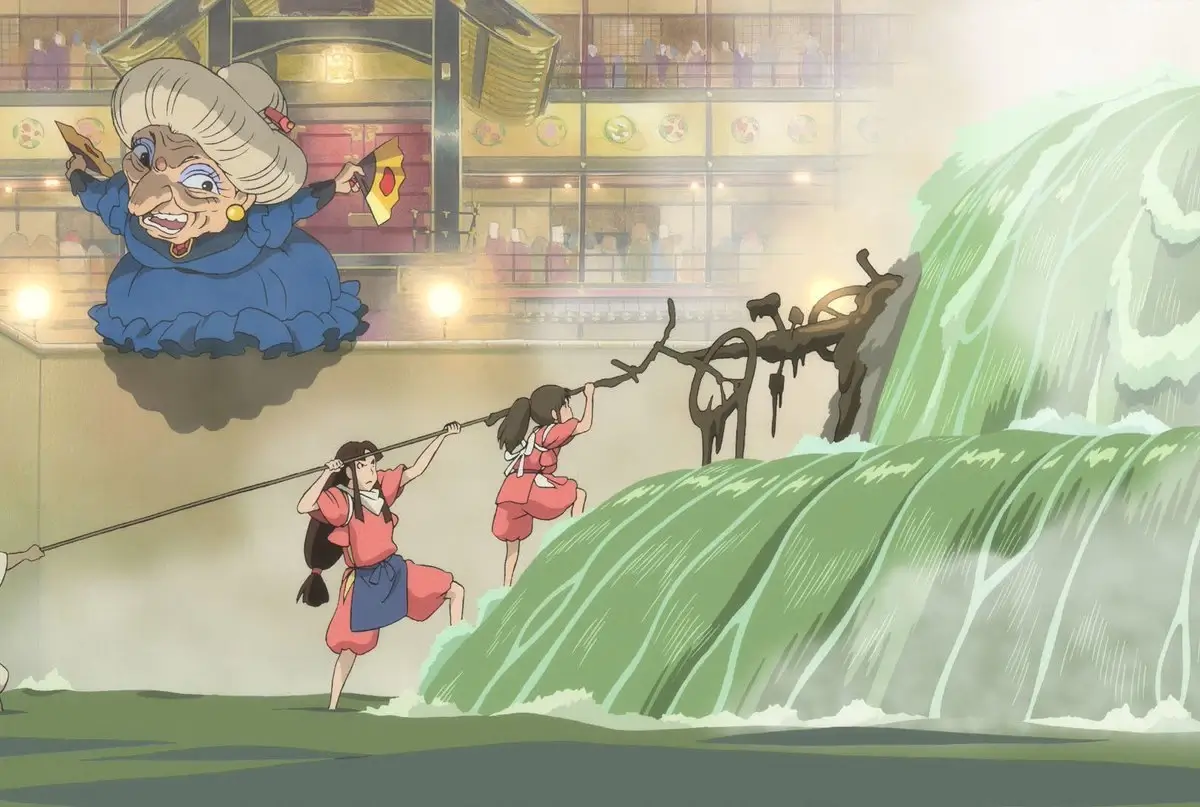
Image: X.com
3. John Lasseter’s Role in “Spirited Away”
John Lasseter, a Pixar animator and a close friend of Hayao Miyazaki, was instrumental in bringing “Spirited Away” to Western audiences. His admiration for Miyazaki’s work led him to convince Walt Disney Pictures to secure the North American distribution rights for the film.
Lasseter’s involvement didn’t stop there; he also took on the role of executive producer for the English-dubbed version, ensuring the translation stayed true to the original Japanese version’s spirit.
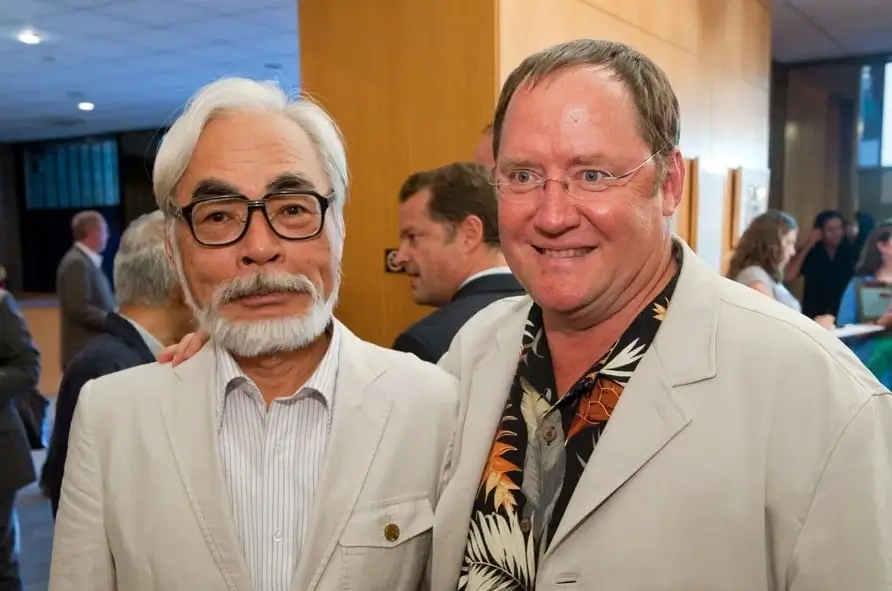
Hayao Miyazaki and John Lasseter. Image: Reddit
4. Studio Ghibli’s International Appeal
Before Disney’s golden handshake, Studio Ghibli’s allure transcended borders, captivating audiences worldwide with its unique storytelling and animation style. Founded in 1985 by Hayao Miyazaki, Isao Takahata, and Toshio Suzuki, the studio’s roots are deeply embedded in the success of films like “Nausicaä of the Valley of the Wind.” This success spurred the trio to establish Studio Ghibli, which quickly became renowned for its rich narratives and distinctive animation. The studio’s international appeal was evident early on, with films like “My Neighbor Totoro” and “Kiki’s Delivery Service” resonating with global audiences, paving the way for Ghibli’s global recognition.
The pivotal moment came in 1996 when Ghibli partnered with Disney, granting the American giant exclusive distribution rights to its catalogue. This partnership catapulted Ghibli films onto the international stage, making household names out of Ghibli’s creations in the West. Disney’s involvement brought Ghibli’s masterpieces to a wider audience, featuring A-list voice actors in English dubs and ensuring the films’ theatrical releases in the United States. Despite the initial modest box office performances, the studio’s films, like “Spirited Away” and “Princess Mononoke,” gained critical acclaim and a dedicated fan base, with “Spirited Away” winning the Academy Award for Best Animated Feature in 2003.
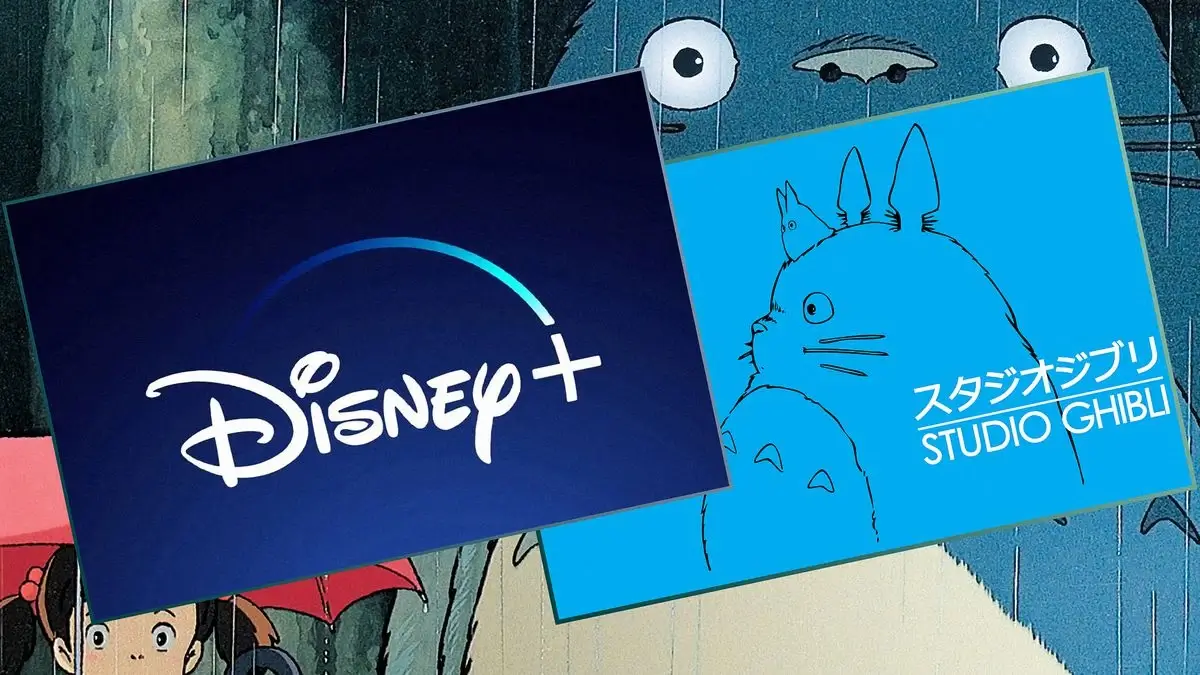
Image: polygon.com
5. Cultural Depth and Diversity in “Spirited Away”
Spirited Away narrative is heavily inspired by traditional Japanese folklore, presenting a fantastical realm inhabited by kami (gods) and yōkai (supernatural creatures). The protagonist, Chihiro, encounters these beings in her journey, which mirrors the concept of kamikakushi – a folklore motif where humans are spirited away to the supernatural world. The film brings to life the animistic belief in the omnipresence of spirits within nature, a viewpoint deeply rooted in Shintoism, Japan’s indigenous spirituality.
Moreover, “Spirited Away” brilliantly showcases the essence of Japanese aesthetics through its use of color, minimalism, and architectural design. The color palette draws inspiration from traditional art forms like ukiyo-e woodblock prints, embodying the natural beauty and seasonal changes of Japan. The film’s settings, especially the bathhouse, reflect a blend of traditional and contemporary Japanese architecture, highlighting the cultural importance of bathing and purification rituals. These elements collectively provide a rich, immersive experience that invites viewers to explore the depth of Japanese culture and art.
6. Inspiration from Youthful Indifference
Hayao Miyazaki, the mastermind behind “Spirited Away”, embarked on creating this cinematic marvel after witnessing the disinterested attitudes of pre-teen girls during a cabin retreat. This observation sparked a desire in Miyazaki to craft a narrative where young girls could not only see themselves reflected but also as heroines of their own stories.
Miyazaki aimed to challenge and enrich the imaginative worlds of these young viewers, pushing against the apathy he noted, by weaving a tale that champions courage, growth, and self-discovery.
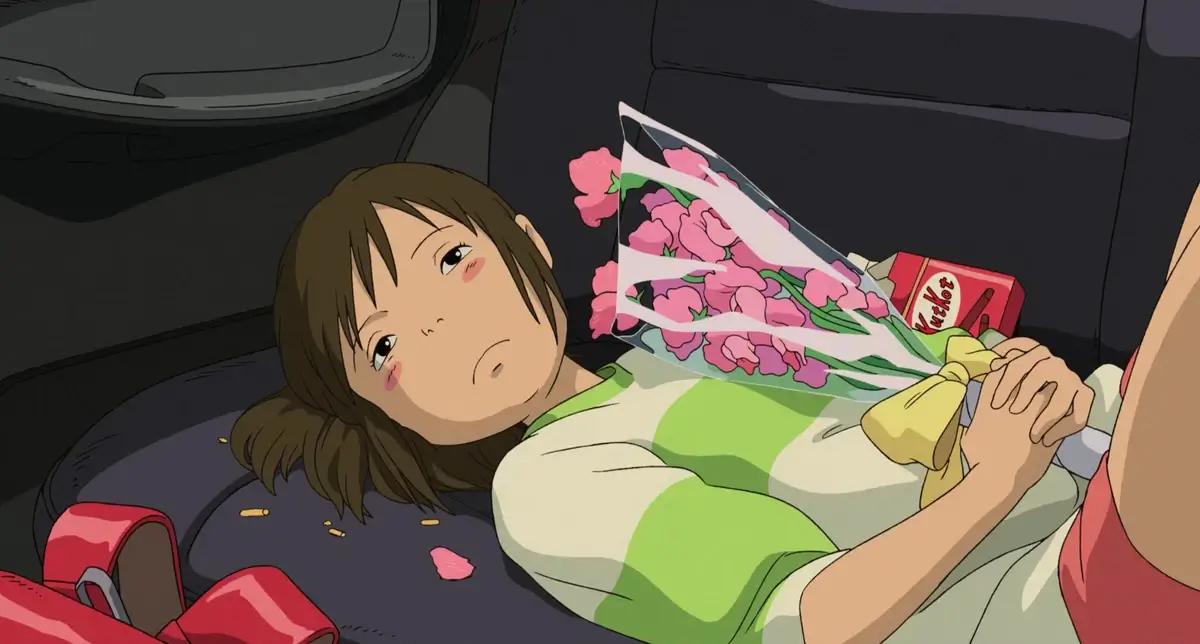
Image: mavink.com
7. Preserving the Film’s Integrity
In a bold move that feels straight out of a cinematic epic, Studio Ghibli stood its ground against Hollywood heavyweight Harvey Weinstein. The studio sent a samurai sword to Miramax with a message that couldn’t be clearer: “No cuts”. This wasn’t just a quirky gift; it was a resolute stand for artistic integrity, underscoring Ghibli’s commitment to preserving the original vision of their works, including the beloved “Spirited Away”.
This legendary gesture has since become a symbol of the studio’s unwavering dedication to their craft, making it a fascinating tale of creativity versus commerce.
8. An Academy Award Milestone
When “Spirited Away” clinched the Academy Award for Best Animated Feature on March 23, 2003, it didn’t just win a trophy; it made history. As the first non-English language film and the first anime to receive this honor, Hayao Miyazaki’s masterpiece broke cultural and linguistic barriers, showcasing the universal appeal of its storytelling and animation artistry. This victory at the Kodak Theater in Los Angeles marked a significant moment not only for Studio Ghibli but also for the global animation industry, highlighting the intricate beauty of hand-drawn animation and the depth of storytelling achievable in the medium.
This win, amidst a strong field of nominees, underscored the film’s exceptional acclaim across the globe, despite its modest box office earnings in the U.S. at the time. The award was a culmination of numerous accolades “Spirited Away” had received worldwide, further cementing its status as a landmark film in animation history.
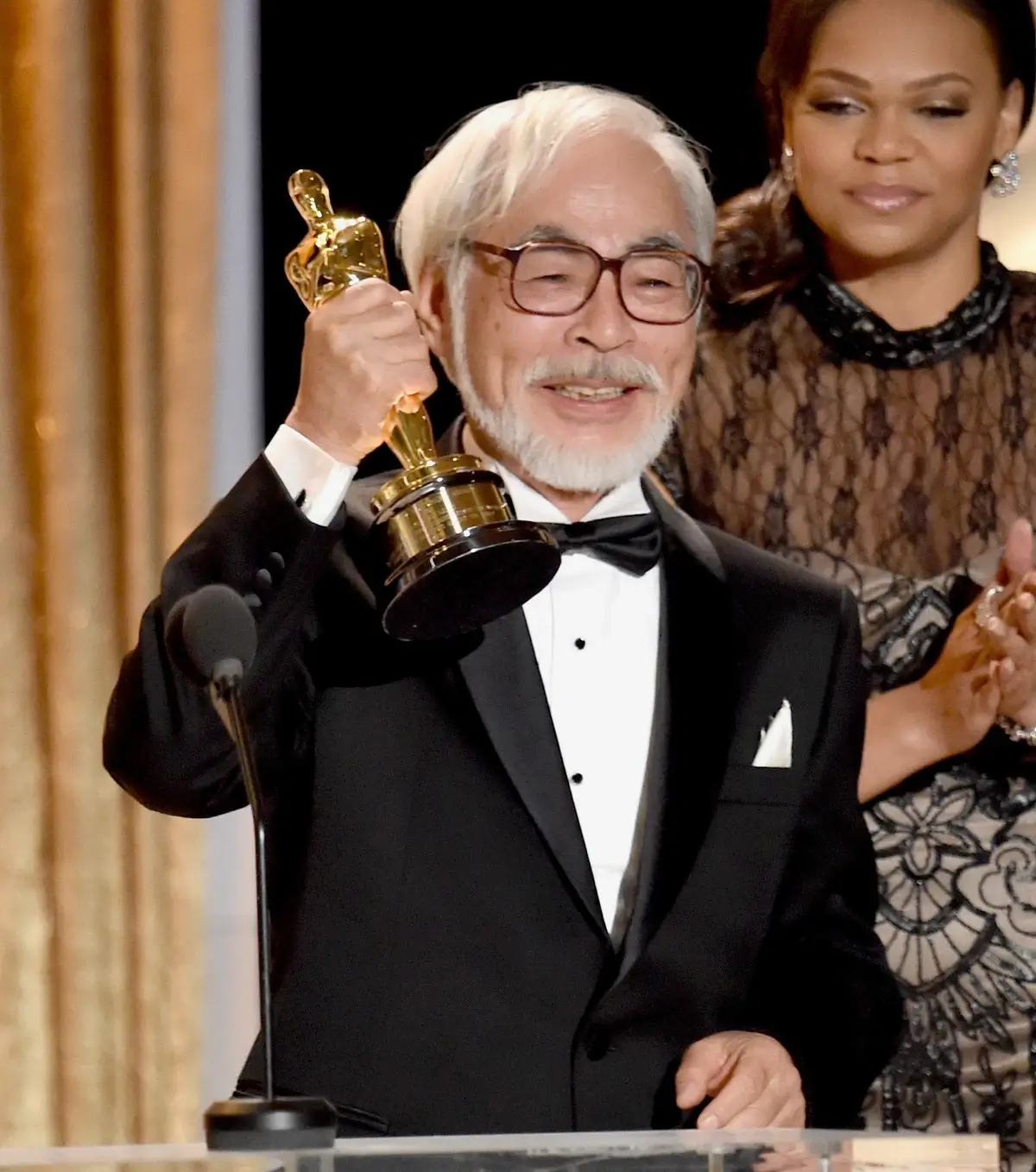
Hayao Miyazaki at the Academy Awards. Image: nytimes.com
9. A Soundtrack That Enhances Magic
Joe Hisaishi’s soundtrack for “Spirited Away” is nothing short of magical, serving as the perfect companion to the film’s enchanting visuals and story. Released on July 11, 2001, by Studio Ghibli Records, the soundtrack includes twenty pieces of Hisaishi’s composition and the memorable end credits song “Always With Me” by Youmi Kimura. The soundtrack, praised for its atmospheric depth and emotional resonance, beautifully complements the film’s magical moments, contributing significantly to the overall experience of the viewer.
The music of “Spirited Away” is highlighted by tracks such as “One Summer’s Day,” which features simple piano lines and delicate string accompaniments, creating a sense of wonder and introspection. Hisaishi’s orchestration is noted for being light and colorful, with the piano maintaining a central role throughout the entire film. This approach helps to establish a cohesive and familiar atmosphere that enhances the otherworldly vision of director Hayao Miyazaki, creating its own kind of magic.
The soundtrack and its accompanying image album, which was released before the film on April 4, 2001, have been lauded for their ability to capture the essence of childhood innocence and the fantastical elements of the film’s world. Critics have praised Hisaishi’s music for having an “eternal, child-like quality without being childish,” akin to a “wistful, sentimental, romantic portrait of childhood innocence.” It’s this unique musical perspective that has solidified the “Spirited Away” soundtrack as a beloved piece of the film’s legacy.
Moreover, Joe Hisaishi’s contributions to “Spirited Away” have been recognized with several awards, including the Annie Award for Music in a Feature Production and the Japan Academy Prize for Best Music. These accolades underscore the soundtrack’s significant impact on the film’s success and its enduring appeal among audiences and critics alike.
10. Detailed Character Design in “Spirited Away”
The heart and soul of “Spirited Away” lie not just in its enchanting story but also in its meticulously crafted character design. Hayao Miyazaki and Studio Ghibli are renowned for their attention to detail, and this masterpiece is no exception. Each character in “Spirited Away” is designed with such intricacy and depth that they effortlessly carry the narrative’s emotional weight and thematic complexity.
The character designs in “Spirited Away” serve as a window into the characters’ souls, reflecting their personalities, roles, and transformations throughout the film. For instance, Chihiro’s evolution from a sullen girl to a courageous heroine is subtly mirrored in her appearance and expressions. Similarly, the enigmatic No-Face, with its simple yet expressive mask, becomes a canvas reflecting the desires and emotions of those around it. The contrast between the twin witches Yubaba and Zeniba highlights not just their differing personalities but also the film’s underlying themes of greed versus kindness.
From the humanoid characters to the myriad of spirits populating the bathhouse, each design is a testament to Ghibli’s commitment to storytelling through visual art. The gallery of 65 original character designs from “Spirited Away” showcases this diversity and creativity, offering a glimpse into the painstaking process behind the film’s animation.
Supporting characters like Rin, Kamaji, Zeniba, and Boh further enrich the narrative tapestry of “Spirited Away.” Their distinctive designs and personalities contribute significantly to the film’s charm and moral lessons, proving that every detail in Miyazaki’s world is crafted with purpose and intention.

Image: characterdesignreferences.com
11. Fan Theories and Interpretations
The captivating depths of “Spirited Away” have not only mesmerized audiences worldwide but have also sparked a plethora of fan theories and interpretations.
One of the most intriguing theories suggests that “Spirited Away” serves as an extended metaphor for prostitution, with Chihiro’s journey through the spirit world paralleling the experiences within the hidden facets of Japanese society. This interpretation is buoyed by the historical context of bathhouses in Japan, which, in some instances, could hint at less savory undertakings. Critics and fans alike have dissected the characters and settings, finding parallels that suggest a deeper, darker narrative under the film’s enchanting surface.
Another theory takes a more metaphysical approach, positing that the entire storyline is an allegory for the stages of growth and self-discovery. Chihiro’s transformation from a sulky, dependent child into a capable, independent young woman mirrors the journey of adolescence. Each character and challenge she encounters symbolizes different aspects of this transition, from facing fears to understanding the value of hard work and compassion.
12. Promoting Environmental and Social Themes
Hayao Miyazaki, the film’s director, masterfully weaves environmental themes throughout the narrative, using the spirit world as a mirror to reflect the beauty and fragility of our own. One of the most memorable moments—Chihiro’s task of cleaning a polluted river spirit—serves as a direct commentary on the human impact on nature. This scene alone encapsulates Miyazaki’s concern for environmental degradation and his call to action for preserving the natural world.
Social responsibility is equally emphasized, particularly through the lens of consumerism and its consequences. The transformation of Chihiro’s parents into pigs after indulging in food meant for the spirits is a powerful metaphor for greed and the pitfalls of consumption without thought for the consequences. This, combined with Chihiro’s growth from a self-centered child to a compassionate and responsible individual, underscores the importance of taking action, caring for others, and making ethical choices.
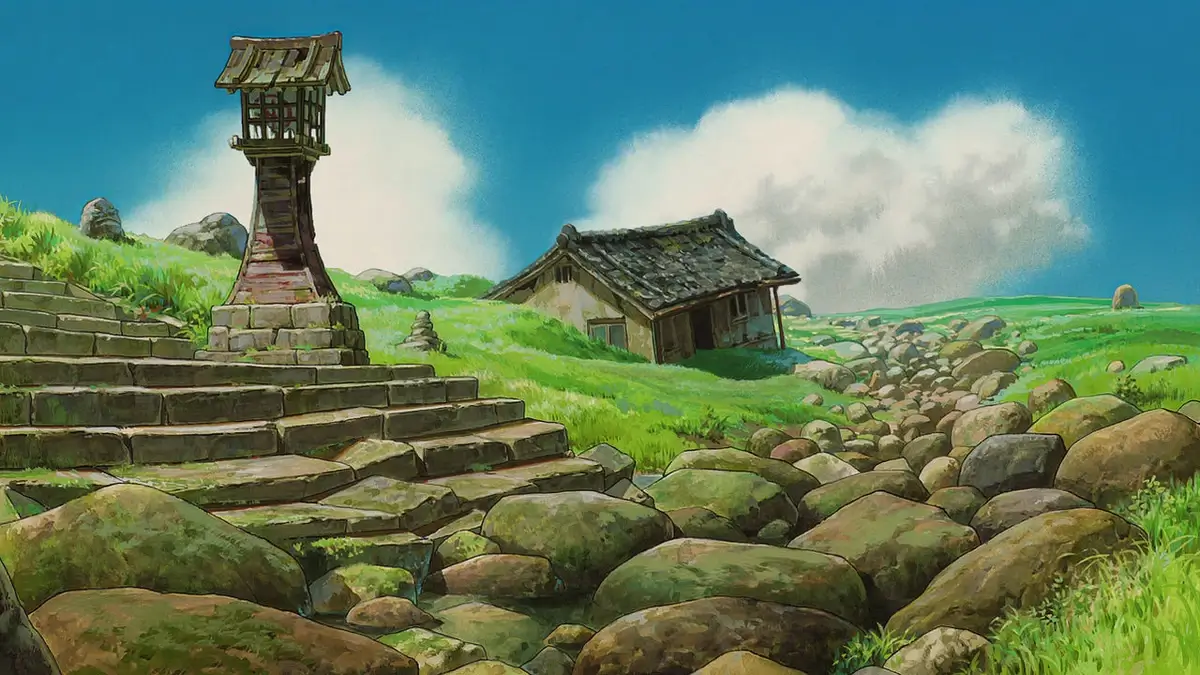
Image: deviantart.com
13. Chihiro’s Real-world Inspiration
Hayao Miyazaki’s “Spirited Away” protagonist, Chihiro, was inspired by the ten-year-old daughter of a friend, aiming to present a relatable heroine. This choice reflects Miyazaki’s intent to create characters that resonate deeply with young audiences, diverging from typical shōjo manga themes of romance to explore self-reliance and growth.
Chihiro’s journey from a sulky child to a courageous individual mirrors real-world challenges, making her an enduring symbol of resilience and empowerment.
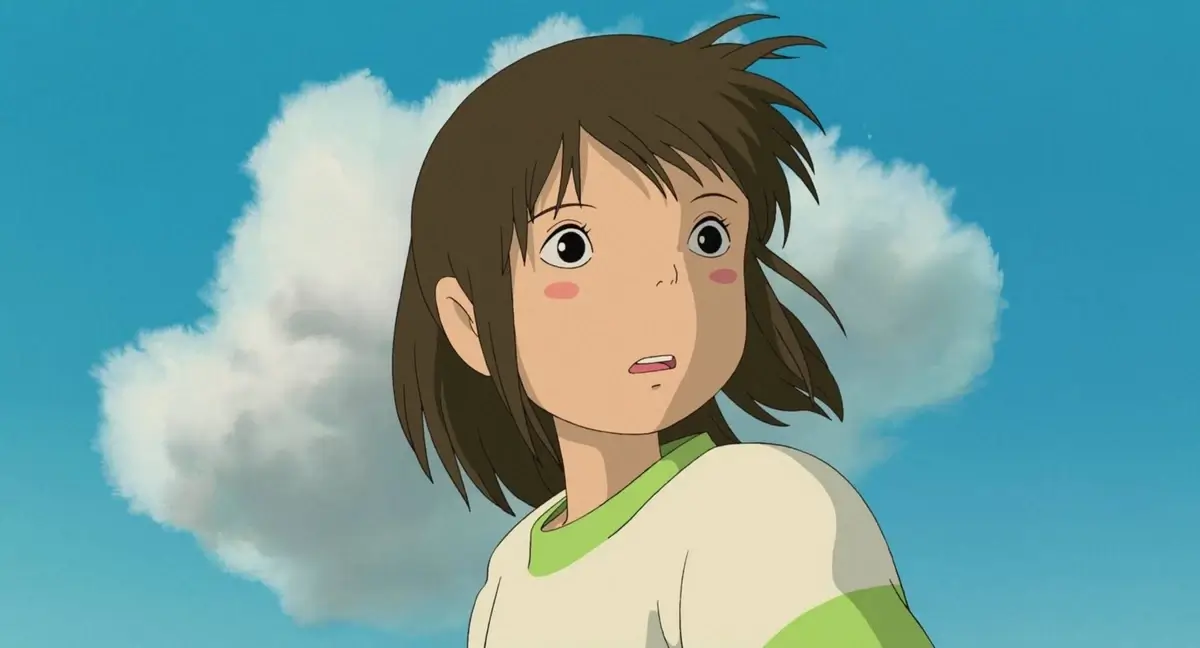
Image: rogerebert.com
14. The Film Broke Japanese Box Office Records
“Spirited Away” not only captivated audiences with its enchanting story but also shattered box office records in Japan, amassing a staggering ¥31.7 billion.
For over two decades, it reigned as the highest-grossing film in Japan, a testament to its widespread appeal and the enduring legacy of Studio Ghibli’s craftsmanship. This remarkable achievement underscores the film’s significant impact on Japanese cinema and its beloved status among fans and critics alike.
15. Hidden Meanings of Names in Spirited Away
“Spirited Away,” Hayao Miyazaki’s critically acclaimed masterpiece, is renowned for its intricate storytelling and deep symbolism, extending even to the names of its characters. The names Boh, Kamaji, Yubaba, and Zeniba are not just arbitrary choices but are imbued with significance, reflecting their roles and traits within the story’s rich tapestry.
Boh, which translates to “little boy” or “son,” is the name of Yubaba’s oversized baby. This name directly corresponds to his role in the narrative and his relationship with his mother, encapsulating his infantile dependence and the transformation he undergoes throughout the film. Kamaji, the industrious boiler man with six arms, has a name meaning “old boiler man” (釜爺, Kamaji). This moniker perfectly captures his occupation and his pivotal role in the bathhouse’s daily operations, as well as his wisdom and care for others under his gruff exterior.
Yubaba, the commanding witch who runs the bathhouse, has a name that evokes her authoritative and maternal qualities. The name combines elements meaning “hot water” (湯, yu) and “old woman” or “witch” (婆, baba), highlighting her dominion over the bathhouse and her complex character as both a captor and a caretaker. Her twin sister, Zeniba, whose name means “money witch,” reflects her initial portrayal related to wealth and materialism, yet she is later revealed as a kind and nurturing figure, offering a different perspective on what true value means.
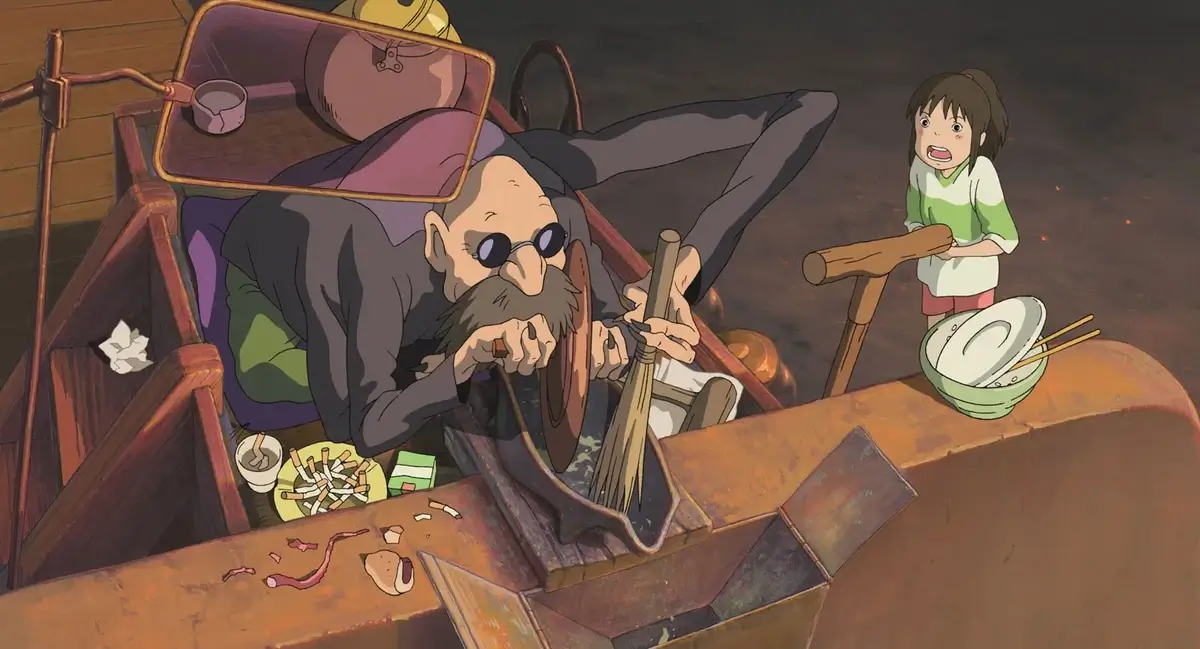
Image: britannica.com
16. No-Face’s Mask and Its Reflection of Personality in Spirited Away
No-Face, a character in “Spirited Away,” wears a mask that is a key piece of Japanese art, reflecting the film’s deep cultural roots and thematic complexity. The design draws from traditional Japanese Noh masks, used in classical musical dramas to convey character and emotion, which resonates with No-Face’s role as a silent observer who absorbs the traits of those around him. This ability to mimic personalities underscores a central theme of identity and desire, illustrating how individuals can lose themselves in their surroundings and the personas they adopt.
The mask’s simplistic design, featuring a wide, ambiguous smile and hollow eyes, symbolizes No-Face’s initial emptiness and his quest for fulfillment through the emotions and characteristics of others. As No-Face encounters various characters, his behavior and form change, mirroring the negative aspects of those he consumes. This transformation highlights the critique of consumption and the fluidity of identity within the narrative, emphasizing the character’s journey towards self-discovery.
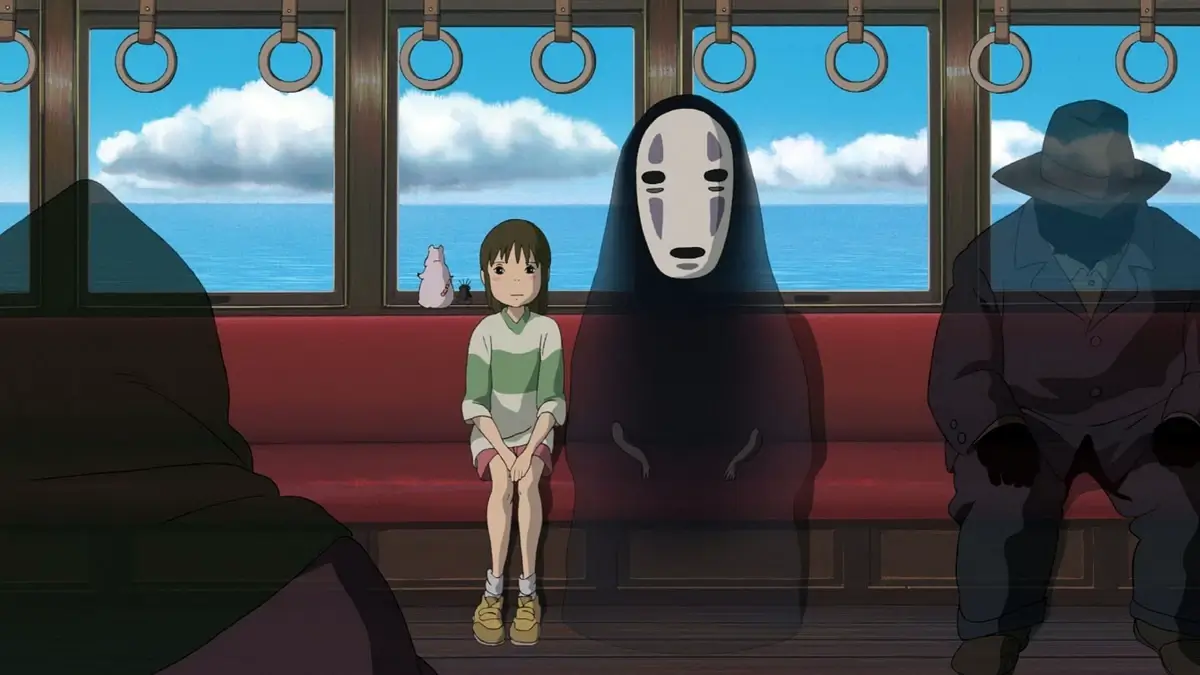
Image: alphacoders.com
17. Miyazaki’s Multitasking Mastery in “Spirited Away”
Hayao Miyazaki’s unique approach to creating “Spirited Away” showcases his unparalleled multitasking skills. As the writer, director, and storyboard artist, Miyazaki’s hands-on involvement ensured every frame of the film was infused with his visionary storytelling and detailed artistry.
This singular dedication allowed for a cohesive and immersive world that continues to enchant audiences worldwide.
18. Haku: From Boy to River Spirit to Majestic Dragon
Haku’s character in “Spirited Away” is inspired by the Mizuchi, a type of water dragon loosely linked to water deities in Japanese folklore, serving as part of the inspiration behind Haku. He embodies the spirit of the Kohaku River, which establishes a profound connection between him and Chihiro based on a past incident where she fell into the river and was safely washed ashore. This connection is a testament to the depth of their bond and Haku’s protective nature towards Chihiro throughout the film.
Additionally, while the film does not explicitly reference kappa, another type of water spirit known for residing in rivers and demanding respect, the inclusion of various spirits in “Spirited Away” draws heavily from a rich tapestry of Japanese folklore, celebrating its cultural heritage and mythological creatures. The film masterfully integrates these elements, creating a complex character in Haku that resonates deeply with traditional Japanese beliefs and the animistic nature of Shinto practices (Just About Japan).

Image: Pinterest
19. Hand-Drawn Animation: The Artistry of “Spirited Away”
Studio Ghibli’s “Spirited Away” is a testament to the enduring charm of hand-drawn animation, showcasing the studio’s commitment to this traditional art form. The film’s detailed visuals, from the fluidity of character movements to the vividly painted backgrounds, highlight the meticulous craftsmanship involved.
Unlike the trend towards computer-generated imagery, “Spirited Away” revels in the possibilities of hand-drawn animation to express a unique artistic vision, bringing to life a world of enchanting landscapes and characters with a depth and warmth that resonate with viewers of all ages.
FAQ
Why is Spirited Away called Spirited Away?
“Spirited Away” is called so because it literally depicts the protagonist, Chihiro, being spirited away to a magical world. The original Japanese title, “Sen to Chihiro no Kamikakushi,” translates to “Sen and Chihiro’s Spiriting Away,” referring to Chihiro’s journey into the spirit world. The title reflects the film’s central theme of transition and change, as Chihiro navigates through an otherworldly realm.
How long did Hayao Miyazaki work on Spirited Away?
Hayao Miyazaki began the production of “Spirited Away” in February 2000 with a budget of $15 million, and the film was released in July 2001. This indicates that Miyazaki and his team worked on the film for approximately a year and a half. This development period involved significant experimentation with computer animation while maintaining a focus on hand-drawn characters, ensuring the technology enhanced the story without overshadowing it.
Is there a hidden meaning behind Spirited Away?
Yes, “Spirited Away” is rich with hidden meanings and themes. It explores the journey of growth and self-discovery, environmentalism, the critique of consumerism, and the loss of innocence. The spirit world serves as a metaphor for the adult world, with Chihiro’s experiences symbolizing the challenges of growing up. The film also touches on traditional Japanese beliefs and Shintoism, emphasizing the importance of respect for nature and the environment.
Why can’t Chihiro look back?
Chihiro is warned not to look back when leaving the spirit world as a symbolic gesture of moving forward. This mirrors the myth of Orpheus and Eurydice and other folklore where looking back can lead to dire consequences, signifying the importance of focusing on the future and not dwelling on the past. For Chihiro, it represents her growth and the need to embrace her new-found maturity as she returns to the human world.
Is Chihiro the only human?
In the spirit world of “Spirited Away,” Chihiro appears to be the only human initially. However, other characters, like Haku and the transformed workers of the bathhouse, have human connections or origins, suggesting that the boundary between human and spirit is fluid. The presence of other characters who have been transformed or are in disguise hints at a deeper connection between the human and spirit realms.
Does Chihiro ever see Haku again?
The film ends without showing whether Chihiro and Haku see each other again. Haku promises Chihiro that they will meet again, leaving their future reunion open to interpretation. This unresolved ending emphasizes the film’s focus on the journey and personal growth rather than concluding with a definitive resolution, allowing audiences to imagine their reunion.
What is the point of No-Face in Spirited Away?
No-Face represents the themes of identity, loneliness, and consumerism. As a character that mirrors the desires and emotions of those around him, No-Face’s actions highlight the consequences of greed and the loss of self in the pursuit of material wealth. His transformation in the film—from a silent observer to a monstrous figure and back to a benign being—reflects the impact of the environment on one’s behavior and the importance of belonging and acceptance.
How old is Chihiro and Haku?
Chihiro is explicitly mentioned to be ten years old in “Spirited Away.” Haku’s age is not specified in the film, leaving it open to interpretation. Given his appearance and demeanor, he is often thought to be slightly older than Chihiro, perhaps in his early teens, though his true age remains a part of the film’s mystique. His spirit form and connections to the spirit world suggest an agelessness that defies human years.





